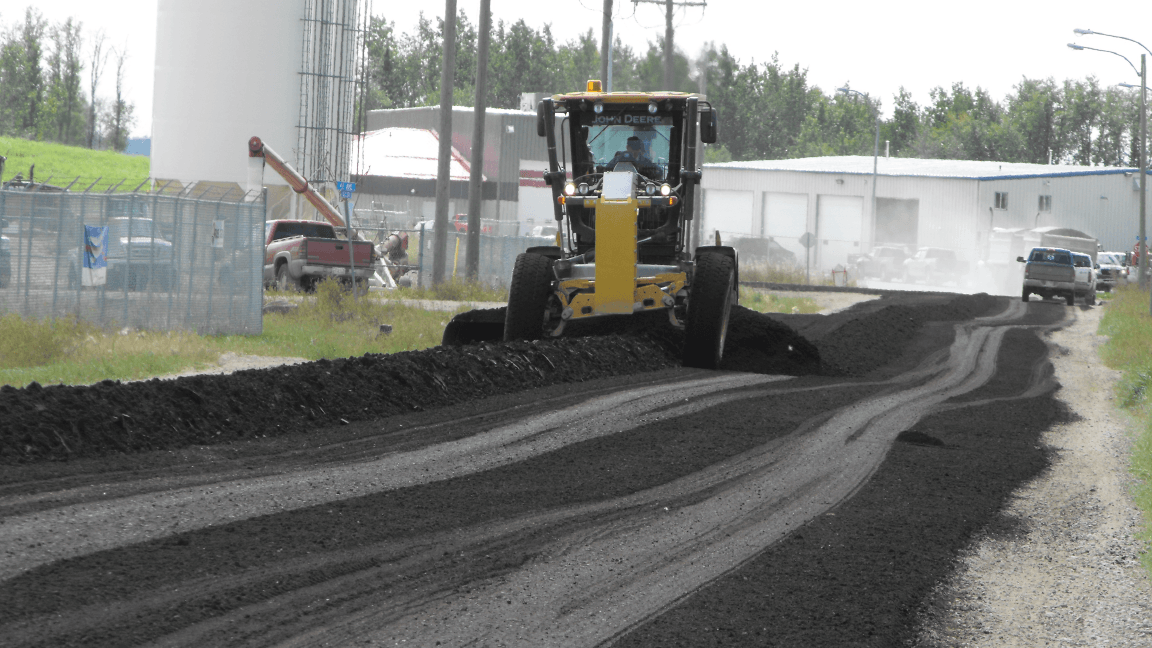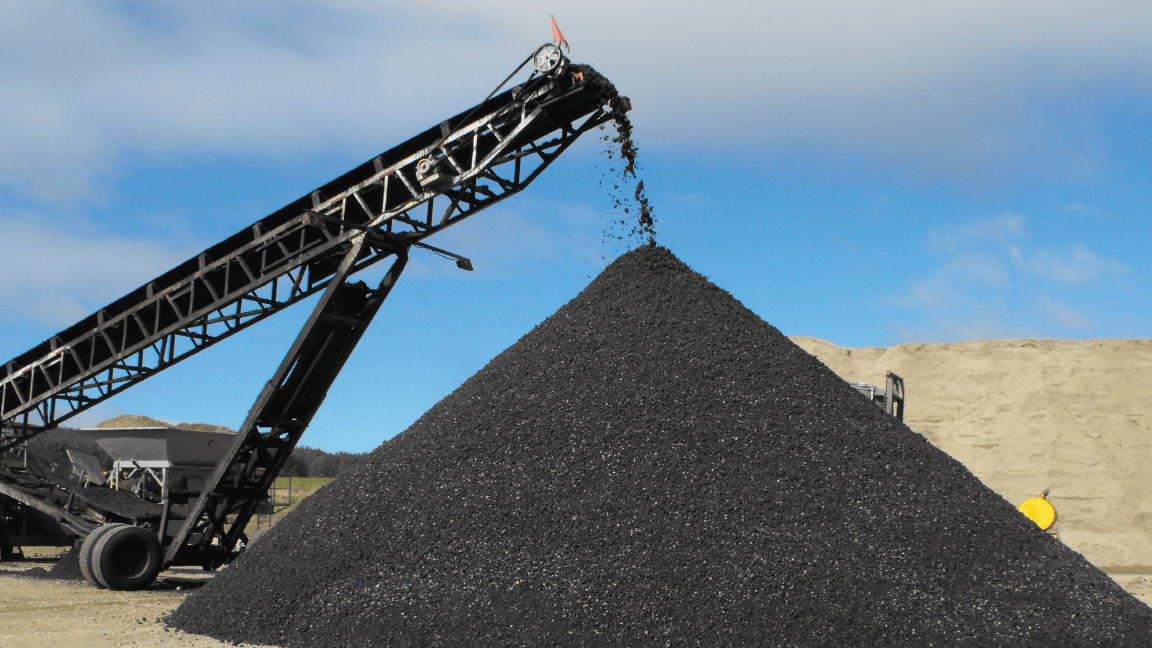MOTOR GRADER MIXING
Motor grader mixing is the most common method of applying road oil, but it is the most time consuming and requires that conditions be extremely favourable at the time the job is performed.
Weather conditions are very critical as the aggregate must be dry before applying the oil (this is a non-emulsified oil product and does not mix with water). SANDS must be allowed to exercise the option to delay application if their application consultant deems aggregate and weather conditions to be unfavourable.
A typical application requires that the windrow be shaped to be even and consistent to attain the best possible mix. Good gravel checking will help when the material is placed. The windrow is then flattened to an 8 to 10 foot width and oil is applied with SANDS’ distributor truck.
The graders proceed to mix the oil into the aggregate. SANDS’ consultant will instruct the operators as to the fastest and most efficient methods for mixing. After a few rolls, the windrow is again flattened for another application of oil. Typically, four passes will be required with the oil distributor. The material is rolled continually until the optimum mix is achieved.
When the mixing process is complete, the SANDS consultant will instruct the grader operators in placing the material to an even depth across the roadway. We recommend that the width of the road be staked prior to application in order to assist the operators in achieving a consistent width when spreading the material.
After the material is spread, SANDS recommends compaction with a rubber wheeled packer. A steel drum will help to smooth the surface, but can only be used after initial compaction by the rubber wheeled unit or by a day of regular vehicular traffic.



